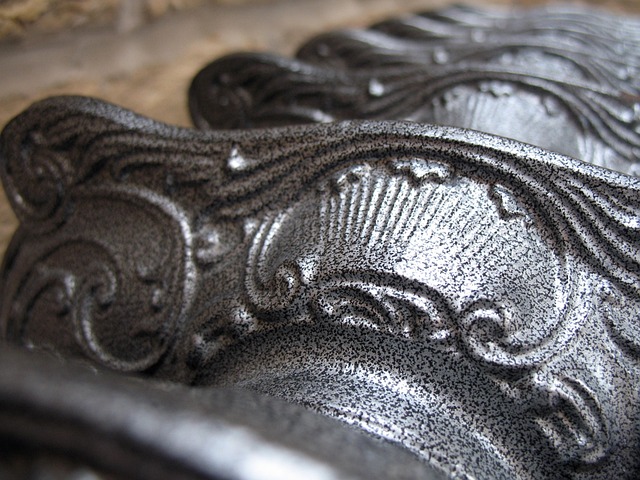Radiator bleeding service is crucial for vehicle performance and safety, removing air bubbles from the cooling system to prevent overheating and engine damage. Signs include leaks, overheating, or unusual noises. Safety precautions involve protective gear and tool knowledge. The process includes locating bleeder valves, attaching a vacuum pump, releasing pressure, topping up coolant, and monitoring levels. Regular maintenance prevents issues and extends vehicle lifespan. Mistakes like improper tools or skipped prep can cause severe damage, emphasizing the importance of correct techniques and routine care.
Efficiently bleeding your radiator is a crucial maintenance task that ensures optimal heating performance and prevents hot spots. This article guides you through the process, from understanding the basics of radiator bleeding to providing a step-by-step guide for a smooth and effective service. We’ll also highlight common mistakes to avoid, ensuring you’re well-equipped with the knowledge to maintain your system efficiently. Discover essential tools and safety precautions to make radiator bleeding a hassle-free task.
- Understanding Radiator Bleeding: The Basics
- Tools and Safety Precautions for Bleed Process
- Step-by-Step Guide to Efficient Radiator Bleeding
- Common Mistakes to Avoid During Bleeding Service
Understanding Radiator Bleeding: The Basics

Radiator bleeding is a crucial process for maintaining your vehicle’s optimal performance and safety. It refers to the removal of air bubbles from the cooling system, ensuring efficient heat transfer and preventing overheating. When air gets trapped in the radiator and its lines, it restricts the flow of coolant, leading to reduced efficiency in dissipating engine heat. This can result in an overworked engine and potential damage if left unattended.
Understanding the basics of radiator bleeding involves recognizing the symptoms of a cooling system leak diagnosis. Signs such as excessive cooling system leaks, overheating during operation, or even strange noises from the engine compartment may indicate the need for a coolant system flush. The process typically entails replacing the coolant in the radiator and flushing the entire system to eliminate any contaminants. Regularly scheduled radiator bleeding services are essential for vehicle owners, ensuring their cars run smoothly and safely throughout various driving conditions.
Tools and Safety Precautions for Bleed Process

When undertaking a radiator bleeding service, safety should always be your top priority. Protective eyewear and gloves are essential to prevent any accidental exposure to hot fluids or sharp components. Additionally, ensure that all electrical components near the engine bay are switched off to avoid any risk of electrocution during the process. Familiarize yourself with the tools required for the job, including a bleeding kit with a pressure gauge, a vacuum pump, and replacement coolant. These tools will enable you to safely remove air bubbles from your car’s cooling system, ensuring optimal performance.
The bleeding process involves several steps: locating the bleeder valves on your radiator, attaching the vacuum pump, opening the valves to release pressure, topping up the radiator fluid (how to top up radiator fluid), and monitoring the coolant level. Regular maintenance of your car’s cooling system through a proper radiator bleeding service can help prevent auto radiator service near me issues like overheating, ensuring smooth operation and prolonging the lifespan of your vehicle’s engine. Remember, addressing car cooling system problems promptly is crucial for maintaining peak performance.
Step-by-Step Guide to Efficient Radiator Bleeding

Bleeding radiators is a crucial task for maintaining your vehicle’s cooling system and preventing radiator overheating. Here’s a step-by-step guide to ensure efficient radiator bleeding, keeping your engine running smoothly. Start by locating the bleed kit, which typically includes special tools and a new coolant. Next, turn off the engine and allow it to cool down completely. Then, remove the radiator cap and open the bleeder valve slowly until you hear a hiss, releasing any built-up air pressure. Refill the radiator with fresh coolant according to your vehicle’s specifications, ensuring no air pockets are trapped.
Once filled, reattach the radiator cap securely. Now, restart the engine and let it run for a few minutes. Check for any leaks and top up coolant as needed. The process of replacing coolant in the radiator and fixing radiator air bubbles is essential to maintaining optimal performance. Regular radiator bleeding service not only prevents radiator overheating but also ensures your vehicle’s cooling system operates efficiently.
Common Mistakes to Avoid During Bleeding Service

When performing a radiator bleeding service, there are several common mistakes that homeowners often make, which can lead to inefficient results and potential damage. One of the biggest blunders is attempting to skip the preparation stage, assuming that opening the system will instantly fix the issue. Proper preparation is key; ensure all components like the pressure cap and radiators are in good condition before beginning. Using incorrect tools or not having a complete understanding of the process can also cause problems. It’s crucial to know the right techniques for bleeding, such as ensuring a continuous flow of air and fluid, and monitoring pressure levels.
Another mistake is neglecting regular car radiator maintenance. Overlooking routine checks and top-ups of coolant fluid (how to top up radiator fluid) can lead to severe damage when issues escalate. Always remember that a well-maintained system will perform more efficiently, so keep an eye on repair radiator pressure cap and other essential components. Proper care ensures the longevity of your heating system and prevents costly repairs down the line.
Efficient radiator bleeding is a crucial aspect of maintaining your heating system’s optimal performance. By understanding the basics, employing proper safety precautions, and following a step-by-step guide, you can successfully perform this task yourself. Avoid common mistakes to ensure a seamless radiator bleeding service that enhances your home’s comfort and energy efficiency.
